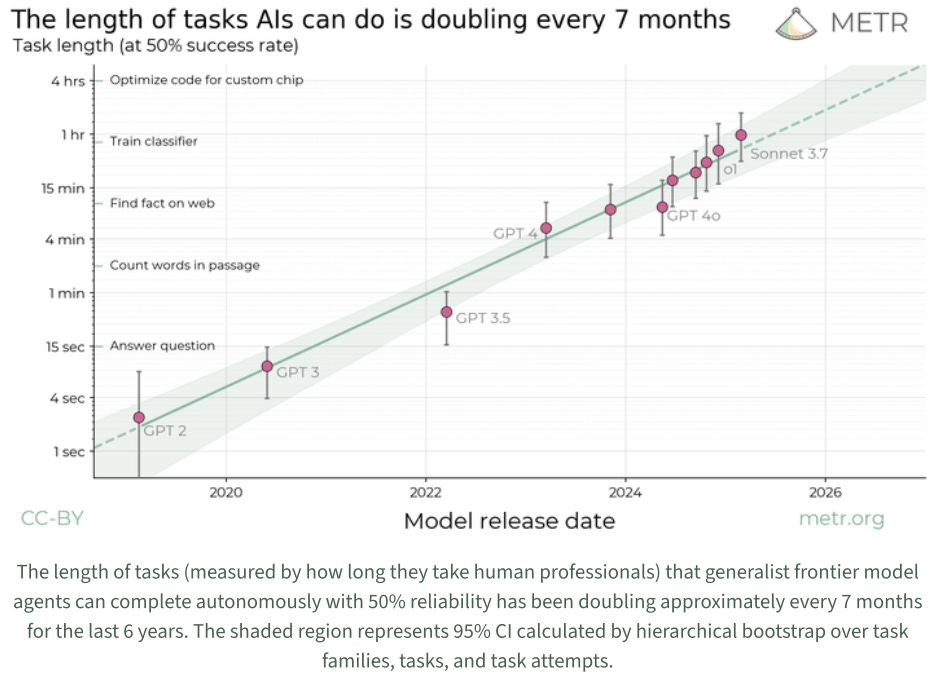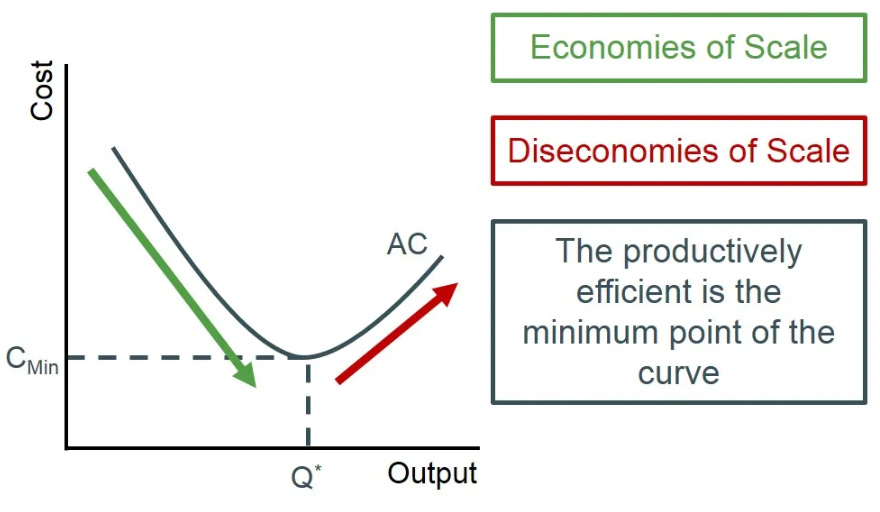This Isn’t About AGI. It’s About Invoices.
AI doesn’t need to be smarter than you — it just needs to be cheaper. Here’s how that changes everything.
👋🏼 Hey, I’m Adam, and my friends call me grandma because you’ve never met anyone who loves to sit under a blanket more.
Special announcement: I’ll be at TED w/c 7 April. If you’re going too, send me a message.
I’m an AI optimist who believes, in the long run, it will be a force for good. The goal here is simple: to help more people engage, learn, and actively shape the future rather than passively react to it.
Consider subscribing, if only to help me buy more blankets.
Let me be super clear:
At CategoricallyResistant, we’re pragmatic, allergic to techno-hype, and unapologetically human-first. We write for the people doing the work — not the ones mistaking GPT-4 for a severance strategy.
And honestly? I didn’t want to write this piece.
Not because the math isn’t sound (it is), or the trends aren’t real (they’re undeniable) — but because this kind of analysis gets misused. It gets read as a layoff plan. A roadmap to obsolescence. A permission slip for short-term thinking.
But that’s not what this is.
This isn’t about replacing people. It’s about redeploying, reskilling, and rebuilding. It’s about understanding the maths so we can keep humans at the centre of the transition — not swept to the margins.
Because if we don’t talk about this? Others will — behind closed doors, with spreadsheets you’ll never see. And they won’t be thinking about how to retrain your team.
They’ll be thinking about how to replace them.
So let’s be blunt. Let’s be clear. Let’s look at what’s actually happening.
This week, METR released new data that’s both incredibly exciting — and incredibly alarming.
It shows AI’s ability to autonomously complete longer, more complex tasks is doubling every seven months. That’s astonishing progress — but it’s also a warning flare. Because AI doesn’t evolve neatly through the middle of organisations. It lives in the edge cases — the weird, cheap, repetitive work at the margins where oversight is minimal, feedback loops are tight, and humans are used to just “getting it done.”
In those zones, AI doesn’t feel disruptive. It just feels… obvious.
And that’s exactly why no one notices the shift until after the org chart changes.
AI doesn’t need to pass the Turing Test, write poetry, or understand your childhood trauma to change the workforce. It just needs to be cheaper — cheaper than your salary, your pension, your burnout management budget.
This isn’t about superintelligence. It’s about subcontracting thinking to a machine that bills by the token.
We obsess over whether AI is smart. But smart isn’t the disruption driver. Cheap is.
We’re not watching the rise of sentience.
We’re watching the cost of labour collapse — quietly, ruthlessly, and ahead of schedule.
If “cost curves” sound like something for finance bros, take another look. This is the logic that breaks industries. The maths that reshapes org charts. The moment when 80% accuracy at 25% cost becomes the most dangerous number in your business.
And no one is going to explain this to you. But don’t worry: this chart here? This is boring as shit. We’re going to make sure it makes sense by the end of this (promise).
If you want to thrive, you’ll need to understand the economics for yourself.
Because this isn’t just happening to you. It’s happening to everyone. And that means we get to choose how we respond.
When change is universal, none of it is personal. But how you respond to it? Entirely personal.
AI doesn’t disrupt with a robot uprising. The revolution is integrated. It starts the moment the spreadsheet says: “You’d be a real dumb-dumb not to use this.”
Today We’re Talking About…
How AI’s cost curve, not its IQ score, is the real engine of disruption
What METR’s task duration data tells us about what’s coming by 2027
A practical formula for understanding when AI becomes economically inevitable
How to calculate your own tipping point — and why no one else is going to do it for you
Which roles get replaced, which get reshaped, and which get redefined
Why humans are still the centre of the story — but only the ones who lean in
Six human-first principles for navigating this transition without getting blindsided
And why AGI doesn’t need to arrive with consciousness when it already arrived with a business model
This One’s Just for Full Subscribers (WHY?!)
Today’s essay is different. It’s not a prediction piece. It’s a playbook — with actual formulas, live models, and tools you can use right now.
We’re not just talking about disruption. We’re showing you the maths behind it, how to apply it to your team, and what the economic tipping points really look like in your own workflows.
If you’re a full subscriber, here’s what you get today:
🔓 What’s Inside:
✅ A complete economic model you can copy and run — in Excel, Google Sheets, or Numbers
✅ A step-by-step breakdown of how AI costs shift with accuracy, verification, and scale
✅ The “Break-Even AI Accuracy” formula — use it to figure out when AI becomes cheaper than your team
✅ A calculator for testing your own scenarios
✅ Six human-first principles for reorganising around AI — without hollowing out your workforce
✅ The real numbers behind that gut feeling you’ve had: “This job is about to change.”
🧠 Why Subscribe?
This Substack is meant to go beyond headlines and fear-mongering to help people understand the mechanics of AI disruption — not just read about it. And as a full subscriber, you can:
Share your results
Ask questions
Pressure-test your assumptions
And join a community of people figuring this out — together, in real time
METR’s Benchmark: AI Task Duration Is Doubling Every 7 Months
Let’s ground this in something firmer than tech optimism and LinkedIn hot takes.
According to METR’s 2025 evaluation, the length of tasks that frontier AI agents can complete autonomously — measured by how long it would take a competent human professional — has been doubling every seven months.
That’s not just progress. That’s a compound-interest-style capability curve with real-world implications. If you’re still waiting for AGI to show up with glowing eyes and a manifesto, you’re missing the quieter revolution happening in Excel models.
Explain It Like I’m Five: Imagine a robot that can do your homework. At first, it can only do one page before it gets tired or confused.
But every few months, it gets better — now it can do two pages, then four, then eight. Every time you check, it’s doing twice as much as before.
That’s what’s happening with AI right now. It’s not becoming a superhero with glowing eyes — it’s becoming a really, really fast office worker.
And instead of taking over the world with lasers, it’s quietly taking over your spreadsheet.
Right now, models like Claude 3.7 Sonnet and GPT-4o can reliably complete tasks that would take a human about one hour — and do so with 50% success. But that bar is rising, fast. If this trend continues (and trends this steep usually do — until they don’t), we’re looking at AI agents autonomously completing full-day (8+ hour) tasks with comparable reliability by late 2026 or early 2027.
This isn’t general intelligence. It’s general economics.
So — what kind of tasks are we talking about?
We’re not talking about strategic boardroom backstabbing or navigating office politics. These are the jobs you’d give to a smart intern, not a McKinsey partner.
Clearly scoped
Think: “Build a web server” or “Classify these audio files by monkey species.”
In real life? That’s setting up a scheduling page, tagging image assets, pulling last quarter’s email performance stats. There’s a start, a finish, and no existential dread in between.
Modular and bounded
One end-to-end task, clearly defined.
For example: “Analyse last month’s sales data and generate a chart with three key KPIs.”
No brainstorming. No team alignment. No Slack ping from Legal. Just: “Do X with Y and email the slide.”
Algorithmically scoreable
Pass/fail or numeric — not “Did it feel strategic?”
Try: “Did the script run? Did the bug get fixed? Did the dashboard load with the right filters?”
This is work that can be marked by a spreadsheet, not a stakeholder.
In METR’s own words:
“Most tasks performed by human machine learning or software engineers tend to require referencing prior context that may not be easy to compactly describe…”
Translation: AI still stumbles on anything messy, political, or requiring memory of “that one weird thing Finance asked for last Q2.” But for repeatable, isolated, scorable work?
It’s not just catching up.
It’s beating us there — and doing it on schedule.
The Core Economic Model: Why 80% Accuracy Changes Everything
Now here’s the part where the spreadsheet starts screaming — and the CFO starts listening.
Let’s take a modular task: reviewing 1,000 legal contracts. Each one takes 4 hours of human time. No drama, just structured legal review — the sort of work junior associates dream about while contemplating a second career in kombucha.
Here’s how the costs stack up:
Let’s unpack the assumptions:
Human rate: $100/hour (fully loaded, i.e. salary + overhead)
AI cost: $10 per million tokens
AI accuracy: 80%
Verification time: 15 minutes per task = 250 hours total
Failure rate: 20% (meaning 200 tasks get kicked back to humans at full cost)
Here’s the kicker:
Every 10 percentage point increase in AI accuracy drops total cost by around 25%. That’s non-linear leverage — because better accuracy doesn’t just save time, it reduces how often humans need to jump in and fix things. Less fallback means fewer billable hours.





